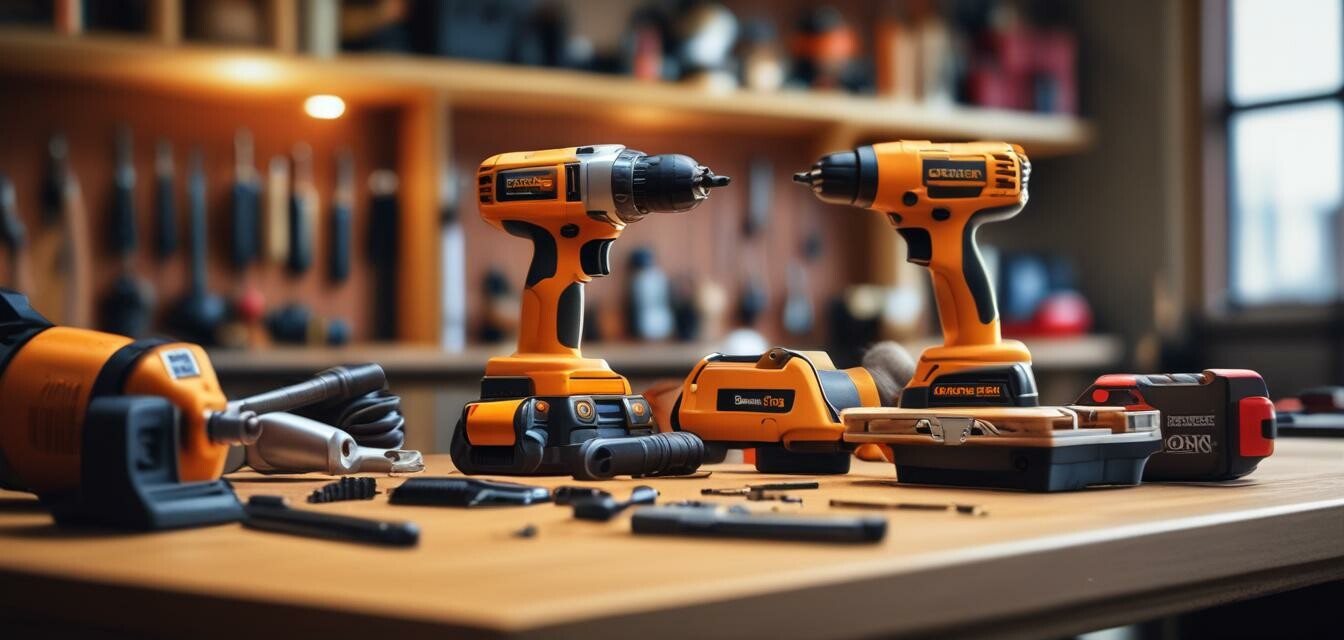
The Future of Power Tool Connectivity
- Increased connectivity features are transforming power tools into smart devices.
- IoT technology allows for real-time monitoring of tool performance.
- Mobile applications enhance user control and maintenance of power tools.
- Future trends indicate more integration of AI and machine learning in power tools.
- Emphasis on battery life and energy efficiency in connected tools.
As technology evolves, so do the tools we utilize in our daily routines as contractors and DIY enthusiasts. The future of power tool connectivity is poised to transform how we work and interact with our tools. This article will delve into the advancements in connectivity features for power tools, explore the benefits they bring, and discuss how these innovations are shaping the industry.
Understanding power tool connectivity
Power tool connectivity generally refers to the ability of tools to connect to other devices, networks, or applications. This connection can allow for real-time data sharing, performance monitoring, and remote control via smartphones or other devices. Understanding this aspect involves recognizing the different technologies that drive connectivity:
- Bluetooth: Enables wireless communication with mobile devices.
- Wi-Fi: Allows tools to connect to the internet for firmware updates and monitoring.
- IoT (Internet of Things): Facilitates data sharing between devices, enhancing user control and efficiency.
Benefits of connected power tools
Integrating connectivity features into power tools presents numerous advantages, especially for professionals. Here are some of the key benefits:
- Real-time performance monitoring: Users can track usage stats and diagnostics, leading to proactive maintenance.
- Enhanced usability: Control tools remotely, schedule tasks, and customize settings through applications.
- Improved collaboration: Share data and project needs with team members instantly.
- Data-driven insights: Analyze usage patterns to maximize tool efficiency and minimize downtime.
Emerging trends in power tool connectivity
The landscape of power tools is rapidly changing with emerging trends in connectivity. Here are some notable developments:
| Trend | Description |
|---|---|
| Integration of AI | Artificial Intelligence is being used to optimize performance and predict maintenance needs. |
| Enhanced battery technology | Newer tools focus on longer battery life and faster charging capabilities. |
| Cloud-based management | Tools that sync data to the cloud for better monitoring and analytics. |
| Augmented Reality (AR) | Tools equipped with AR for planning and guiding installations or repairs. |
The impact on DIY enthusiasts and contractors
The ongoing innovations will not only improve the efficiency of contractors but also provide DIY enthusiasts with tools that are easier to use and maintain. As connectivity features expand, the ability to troubleshoot and control devices remotely reduces the learning curve associated with using more advanced power tools.
Examples of applications
Mobile applications designed for power tools are becoming increasingly popular. Features often include:
- Step-by-step tutorials for using tools.
- Maintenance reminders based on usage.
- Real-time feedback on performance data.
- Integration with other smart home devices for seamless project management.
Considerations for consumers
As you consider investing in connected power tools, take the following into account:
- Evaluate tool compatibility with existing devices you own.
- Read user reviews regarding connectivity stability.
- Assess the available applications for user-friendliness.
- Consider the potential future-proofing benefits of new technology.
Conclusion
The future of power tool connectivity is not only about enhancing the functionality of tools, but it’s also about improving the overall user experience. As advancements continue, we can expect even more innovative features designed to cater to the needs of both contractors and DIY enthusiasts.
Tips for choosing the right connected tools
- Look for tools that have a strong reputation for connectivity.
- Choose devices that have user-friendly support and applications.
- Prioritize battery life, especially if you're frequently in the field.
- Research compatibility with other smart devices you may own.
Pros
- Enables real-time monitoring and performance feedback.
- Enhances usability with mobile app integration.
- Provides data-driven insights for better efficiency.
- Facilitates easier maintenance and troubleshooting.
Cons
- Increased reliance on technology and connectivity.
- Potential for security vulnerabilities with online features.
- Learning curve associated with new technologies.
To stay updated on more trends in the portable power tools industry, check out our News and Trends section. For guidance on what tools to purchase, refer to our Buying Guides.
